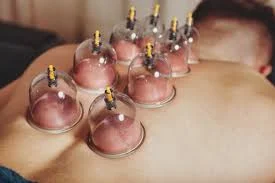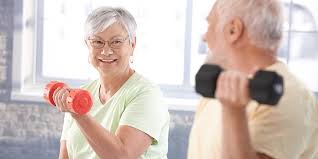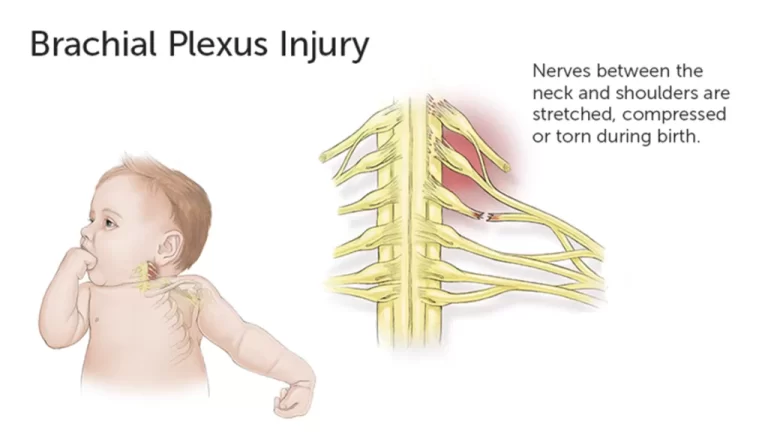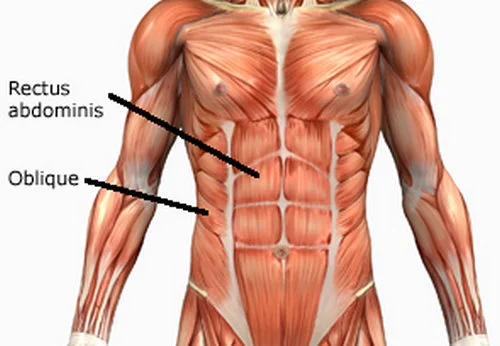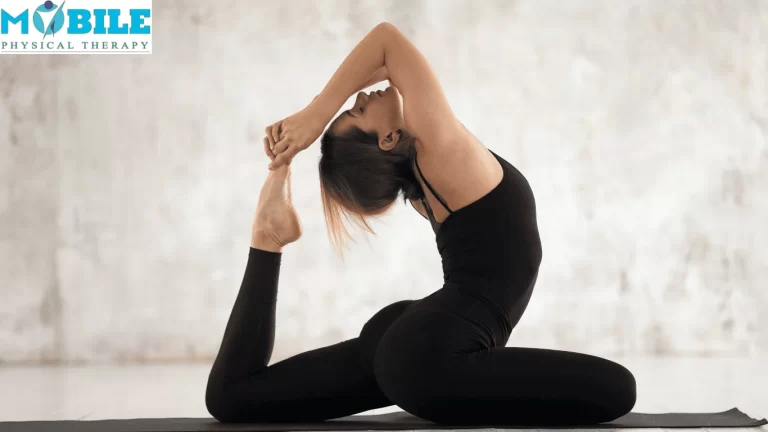What does Cupping Treatment Do?
Table of Contents
What is Cupping Therapy?
- Cupping therapy is an age-old therapeutic technique that may help with headaches, neck, and back discomfort, as well as other problems. It applies suction to your skin to enhance blood flow to the affected area. Cupping might result in infection and bruises.
- During cupping therapy, an old form of alternative medicine, a therapist puts special cups on your skin and leaves them there for a few minutes to produce suction. A deep-tissue massage or assistance with pain, inflammation, blood flow, relaxation, and general well-being are just a few of the reasons people get it.
- Cupping is an alternative type of therapy that involves suctioning the skin using glass, plastic, or silicone cups. It may improve blood flow, clean out toxins, boost immunity, and reduce skin pain.
- As an alternative therapy, cupping uses suction cups applied to the skin.
It is believed that this suction will enhance the body’s energy circulation and promote healing. - A papyrus called Eber’s from Ancient Egypt (1550 B.C.) is one of the first medical texts to mention cupping therapy. Nonetheless, many other traditional medical practices, including Chinese, Unani, traditional Korean, and Tibetan, incorporate cupping.
- Hippocrates, the Greek physician who is widely regarded as the “father” of medicine, even wrote up instructions on how to do cupping procedures.
- Nowadays, the majority of Traditional Chinese Medicine professionals offer cupping therapy as a kind of treatment.
- Supporters contend that the suction aids in the body’s “qi” flow. The Chinese term for life force is qi.
- Many people think that cupping aids in yin and yang balance, or the negative balance between these two extremes, which is supposed to support the body’s capacity to enhance blood flow, lessen discomfort, and resist infections.
- Cupping facilitates better blood flow to the surrounding tissue. This could relax stiff muscles, improving blood flow in general and promoting cell proliferation. It may also facilitate the development of new blood vessels and connective tissues inside the tissue.
- Cupping is used to treat a range of conditions and symptoms in addition to medical care.
Overview:
- During cupping therapy, the provider places cups on the patient’s back. Using the power of suction, cupping therapy draws blood to the skin’s surface. The goal is to facilitate the body’s innate healing process in these regions.
What is cupping therapy?
- An ancient therapeutic technique called cupping treatment is used by some patients to lessen discomfort. Cups are applied to your arms, legs, back, stomach, and other body regions by the giver. The cup creates a suction force or vacuum that pushes your skin upward.
- A type of traditional medicine that has its roots in West Asia and China is cupping therapy. This is a method that has been used by people for thousands of years.
- Cup therapy, suction cup therapy, and cupping are some other names for cupping therapy.
Procedure:
What is the process of cupping?
- Currently under investigation is the precise mechanism by which cupping reduces discomfort and symptoms of illness. There hasn’t been much research done on the therapy.
- After being removed from the cupping, the fluid is injected into the treatment area. The capillaries—the microscopic blood vessels beneath your skin—expand and rupture as a result of this suction force. Your body restores healthy blood flow to the cupped areas and encourages normal and adequate healing at the cellular level. Some believe that cupping releases toxic compounds as a result of this effect.
How is cupping performed by medical professionals?
- There are various techniques for cupping. The phases vary slightly depending on the chosen strategy. Your supplier will leave the cups in place for a short while. During some treatments, the cups are moved quickly to stretch and massage the area.
Methods for cupping include:
Dry: Your supplier heats the interior of each cup. The traditional method is to light an alcohol-soaked cotton ball on fire. The heat pushes oxygen out of the cup, creating a vacuum. Using a suction device to remove the air from the cups is a more modern technique. The suction force draws your epidermis upward into the cup.
Running: It’s comparable to dry cupping. But before beginning, your medical professional will massage some oil or lotion into your skin. They will delicately glide the cups over the affected area of your body in different directions after they are in place.
Bleeding: Before applying the cups, your healthcare professional delicately punctures your skin with a needle. Toxins can now be released from the suctioned blood that is held in the cup.
Your physician may apply many cups to your skin, depending on the procedure. Typically, providers use three to five cups, but on rare occasions, they may use seven. It is unusual to receive more than seven cups in one session.
What kind of cups are they using in therapy?
- The majority of suppliers utilize glass or plastic cups, however, additional varieties include:
- Ceramic
- Metal
- Silicone
- Bamboo
Who performs cupping therapy?
- A variety of medical practitioners, including the following, can receive cupping training:
- Acupuncturists
- Chiropractors
- Massage therapists
- Medical doctors
- Physical therapists
Risk Factors / Benefits
What risks or complications might cup therapy present?
- Cupping therapy is comparatively low-risk. However, you might encounter:
- Bruising
- Burns from heated cups
- Fatigue
- Headaches
- Muscle tension or soreness
- Nausea
- Scars, itching, or infections of the skin
- Vasovagal syncope, or fainting following a reduction in heart rate and blood pressure, can occur in rare cases. This is most commonly seen in patients who pass out from needle sticks after wet cupping.
What benefits can cupping therapy offer?
- The following benefits of cupping therapy are attested to by numerous patients:
- Reduces pain and inflammation
- Decreases muscle tightness
- Improves blood flow
- Increases range of motion
Has it been verified by science?
- A considerable amount of study is being done to determine how and why cupping might be effective.
- According to a 2018 review of research, cupping therapy has shown promise for treating a range of ailments that fall into the categories of systemic or localized disorders.
- Cupping is believed to reduce symptoms by enhancing immunity and peripheral blood circulation, or blood flow near the skin.
- The 2018 review lists the following outcomes of cupping therapy:
- Enhancing the blood flow to the skin
Altering the biomechanical characteristics of the skin
Raising the threshold for pain
Enhancing anaerobic (oxygen-free) metabolism locally
Lowering swelling and increasing cellular immunity
- Enhancing the blood flow to the skin
- According to a 2017 study, cupping increases local blood flow by mechanically expanding the underlying tissue.
- Cupping therapy has several potential benefits for both local and systemic health, and one of these benefits may be the activation of Heme oxygenase-1, a gene crucial for avoiding vascular inflammation.
- According to a 2019 study, there are a few theories that could explain all of the effects of cupping, but none is complete. These include:
- Changing the molecular structure and function of hemoglobin (Hb) modifying the processing of pain signals by counter-irritating, or using pain to reduce pain, increasing blood circulation through the release of nitric oxide, stimulating the immune system with artificial local inflammation, increasing the level of immune products, such as interferon and tumor necrotizing factor, increasing lymph flow in the lymphatic system, lowering cholesterol in both forms and uric acid.
- Despite the presence of several theories, more high-quality research is needed to confirm the effects of cupping and the mechanisms by which they may or may not aid in healing.
Which types of cupping are there?
- Animal horns were probably used for cupping’s initial practice. Cups were eventually constructed of clay and subsequently bamboo.
- The heat was the main tool used to create suction. Originally, cups were put to the skin after being heated over a fire. When the cups cooled, the skin was drawn within.
- Glass cups in the form of bells are frequently used for modern cupping. They could also be composed of silicone or plastic.
- These days, cupping falls into four major categories:
- Dry cupping: A suction-only technique
- Wet/bleeding cupping: This technique combines controlled medication bleeding with suction.
- Running cupping: After massaging the targeted area with oil, suctioned cups are moved across the body.
- Flash cupping: It is the process of repeatedly and quickly suctioning cups onto a body part.
- Additionally, cupping can involve the use of:
- Mugwort leaves burning, or moxibustion, using acupuncture needles
- Herbal remedies, magnets, laser treatment, and electrical stimulation
- Among the subsets of cupping are:
- Sports cupping and face cupping
- Orthopedic cupping
- Water-based cupping (Aquatic cupping)
- Whichever approach is chosen will depend in part on your preferences, your medical needs, and your practitioner.
Treatment:
What can I anticipate from a cupping treatment?
- There are times when acupuncture treatments are combined with cupping.
You could also wish to fast for two to three hours prior to your cupping session, or just have light meals, for optimal outcomes. - After a cupping treatment, you should expect to experience the following:
- If this is your first visit, your doctor will likely ask you about your symptoms and obtain a complete medical history.
- Your skin will be covered in cups by the practitioner.
- The practitioner can use suction or heat alone to position the cups.
- The practitioner can place the cups using just heat or suction.
- After completing a particular type of cupping, the practitioner could disappear for a short while to let you unwind before returning to take out the cups.
- Following your session, your skin will be red and slightly bruised.
- Make sure you find out from your practitioner what type of cupping they intend to use before starting therapy. This could entail jogging, facial cupping, becoming wet or bleeding, and more.
What is the duration of this session?
- The cup is left in place for a certain period, usually five to ten minutes, while dry cupping.
- The practitioner makes a small incision to draw blood while employing wet or bleeding cupping, and then deliberately employs the cup’s suction to remove any leftover blood.
- When running cupping, oil is usually applied before employing suction. The cups are then progressively pushed throughout the area to mimic a massage. Your appointment may go from ten minutes to an hour or longer, depending on the type of treatment you’re getting.
- Following a brief suctioning, the cups are typically released in the same generalized area of the body while flash cupping. Additionally, this normally takes five to ten minutes.
- Among other things, cupping therapy may be beneficial for the following conditions:
- Shoulder, neck, and lower back pain
- Migraine and headache
- Knee pain
- Paralysis of the face
- Dyspnea and cough
- Acne
- Lumbar disc herniation
- Spondylosis in the neck
- Brachialgia is a pain in the neck caused by a trapped nerve
- Carpal tunnel syndrome
- Higher blood pressure
- rheumatoid arthritis, diabetes mellitus, asthma
- To determine the true efficacy of cupping for certain illnesses, more research is required.
Adverse effects:
- The adverse consequences of cupping are rather low. The side effects that you may experience often occur during or shortly after your therapy, and they consist of:
- Circle stains where the cups were stained dizziness
- You may have dizziness or faintness throughout your treatment. Occasionally, you may also experience nausea or sweating.
- There is a possibility that the skin surrounding the rim of the cup will become irritated and speckly after treatment. You may feel pain at the locations of your incisions after the treatment.
Other risks consist of:
- Skin hematoma scarring (bruising)
- You may have dizziness or faintness throughout your treatment. Occasionally, you may also experience nausea or sweating.
- Infection is a constant risk following cupping therapy, particularly wet/bleeding cupping. The risk is low and often nonexistent if your practitioner adequately cleans your skin and manages infection both before and after your session.
Things to Remember:
- Cupping therapy is not advised for all patients.
- If you take medication that thins the blood, avoid using cupping. Avoid cupping as well if you have:
- A sunburn
- A cut, a skin ulcer, recent trauma, an internal organ disease, or thinned skin
- Cupping is not appropriate for:
- Veins, arteries, nerves, skin blemishes or inflammation, bodily openings, eyes, and lymph nodes
- Veins that varicose
- Most doctors are neither trained in nor have expertise in complementary and alternative medicine (CAM). However, it’s a good idea to inform your doctor if you choose to incorporate cupping into your treatment plan.
- Continue with regular doctor appointments related to your ailment to get the benefits of both worlds. Although cupping can support medical therapy, it shouldn’t replace it.
Takeaway:
- The ancient practice of “cupping” involves suctioning the skin with silicone, glass, or plastic cups. It might improve blood flow, strengthen the immune system, and lessen discomfort.
- A growing body of evidence indicates that cupping could be a useful adjunctive treatment for a range of ailments and symptoms. However, additional high-quality research is required to validate the benefits of cupping.
FAQs
The suction force of cupping tears apart the tiny blood vessels called capillaries in your skin. In a week or two, the red, spherical cupping therapy markings on your skin should go away. Even though these marks resemble bruises, they are not actual bruises that cause damage to muscle fibers.
Although there shouldn’t be any pain involved, cupping may produce some skin tension. You might feel bruised and a little sore after cupping therapy, but you shouldn’t experience excruciating pain.
According to the aforementioned research, cupping can remove toxins by triggering both a local and systemic immune response.
Furthermore, it may eliminate uric acid, a waste product that is naturally produced during the digestion of particular meals. Uric acid buildup can lead to elevated blood and urine acidity levels.
A disruption in lymphatic drainage can cause fluid retention and hinder the body’s capacity to effectively eliminate toxins. One method to deal with this issue is massage along with lymphatic drainage. Likewise, cupping may promote improved lymph movement and lessen fluid retention.
Cupping may also have positive benefits on the lymphatic system, which aids in the removal of waste from your body.
Further research is necessary to corroborate the optimistic evidence regarding cupping’s capacity to clear contaminants.
Cups are typically used on the following:
Legs, buttocks, abdomen, and back
The most popular spot to utilize cups is usually the back. Your face will be covered with cups if you are getting facial or cosmetic cupping.
Alcohol, herbs, or paper that is inserted straight into the cup are frequently used to heat the cup over fire. You take out the fire source and place the heated cup on your skin, open side up.
Your skin and muscles are drawn up into the heated cup by a vacuum created when the air within cools down as it comes into contact with your skin. As a result of the blood vessels’ reaction to the pressure shift, your skin could become red.
Rather than employing more conventional heat methods, some contemporary cupping practitioners now use rubber pumps to induce suction.

